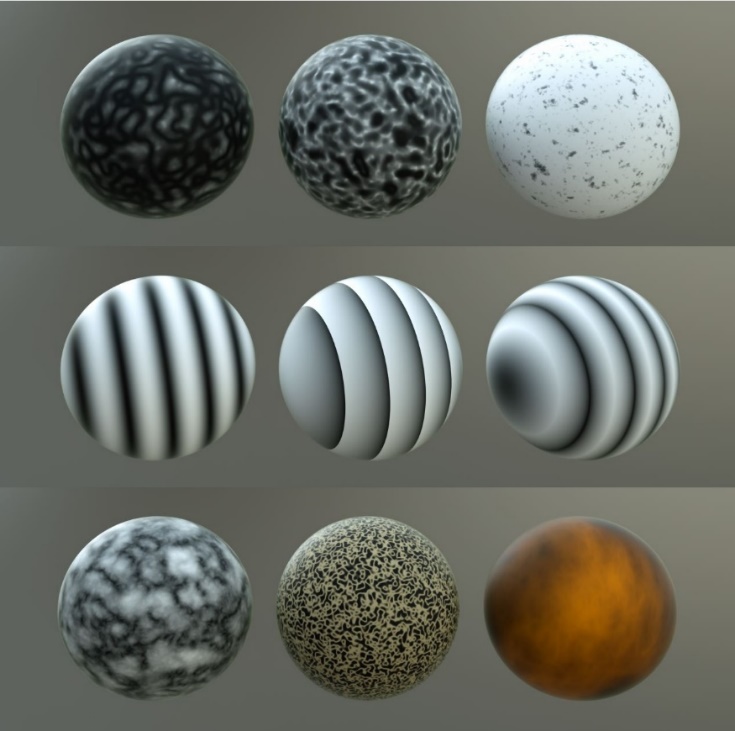

The Texture types allow for creating very flexible materials.
TexturesTextures are used to add details to a surface. Textures can be procedural or imported raster files. are used to create patterns that can be used alone or in combination with the Mapping and Colour textures to create memory efficient, procedural textures that, in turn, can be used to create textures, bump maps and other advanced materials with minimal impact to GPUThe GPU is responsible for displaying graphical elements on a computer display. The GPU plays a key role in the Octane rendering process as the CUDA cores are utilized during the rendering process. memory.
It is therefore advantageous to explore creating materials using these textures before resorting to image based textures.
In this Chapter the examples are mainly used for the DiffuseAmount of diffusion, or the reflection of light photons at different angles from an uneven or granular surface. Used for dull, non-reflecting materials or mesh emitters. Node to show that specific subject.
If you want to create a specific material, i.e. scratched metal, you can use different Textures types and settings for the different Node types, such as diffuse, reflection, transmission, etc.



In the plugin the Textures are shown alphabetically, but will be described next in Texture Category order: